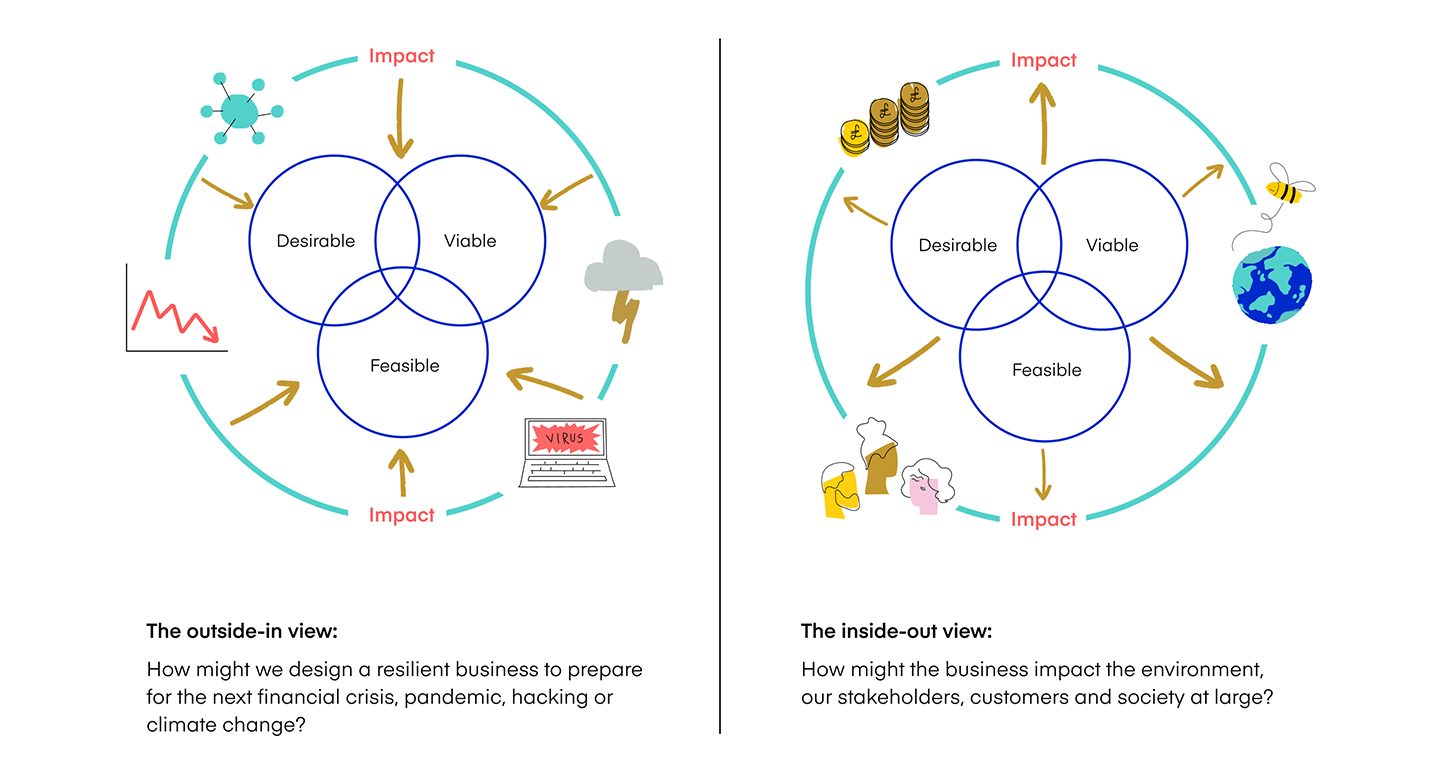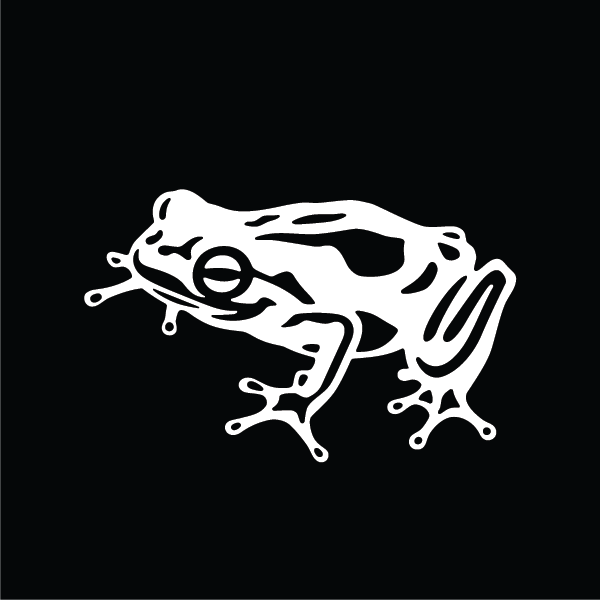
Sustainability by design: better for the world and resilient to system shocks
For the first time in as long as people can remember, there are small fish in the now-clear canals of Venice. In Mumbai, a flock of 150,000 flamingos has settled in the newly-quiet city. And in East London, a small herd of deer has taken up residence in Harold Hill.
These eerie, beautiful, poignant events are stark reminders of two things. First, that human activity – including business – places an enormous toll on the natural world we share with billions of creatures, on which we all depend.
Second, that nature is resilient. Evolution has honed plants and animals into a complex and interdependent ecosystem with a built-in ability to adapt, sometimes even thrive, when faced with external shocks and pressures.
A microscopic threat with macroeconomic impact
Contrast that with us humans. The Coronavirus (COVID-19) pandemic is a seismic shock, massively disrupting business and people’s lives globally. It’s affecting everything from supply chains to demand, to stock markets, to education, mental health, and societal attitudes – with tragic consequences.
But Coronavirus isn’t alone; the global financial crisis and the ongoing climate catastrophe are other examples of systems shocks that have come before. And more will come, inevitably. None of these were unforeseeable. Yet most businesses were ill-prepared for these disruptions. Why? Because they’re designed to operate very efficiently and to deliver value in the short term for stakeholders. That means ignoring ‘externalities’ or small but existential risks.
Why? And what might we learn from the fish, flamingos and deer about designing for resilience?
Why a responsible business is a good business… and a resilient one
Like many designers and studios across the globe, we’ve been exploring how to respond to systems threats like the climate emergency and pandemic in a concerted, meaningful way.
We believe we can help businesses be sustainable in two senses of the word. By taking an inside-out view, they can be more aware of their impact on the world and design a business that’s desirable and ethical. And by taking an outside-in view we can better prepare businesses to absorb, or even capitalise on, external shocks.
We design new ventures such as Smarty, Superdrug Mobile and Asto. It means we have an opportunity to influence the next generation of businesses: their impact on stakeholders, the environment and society at large.
But why should businesses care about stakeholders, the environment and society at large? Aren’t those that care at a competitive disadvantage to their less ethical peers?
We don’t think so. People’s buying behaviour is increasingly driven by a company’s values, and actions. In a fierce war for top talent, firms that have a purpose beyond profit are more likely to attract and retain talent. Firms with a focus on environmental, social and governance (ESG) issues look like they’re less impacted by systems shocks, outperform those that don’t, and are increasingly the focus of big investment firms.
As we’re learning in real-time with the outbreak of COVID-19, today’s companies must increasingly account for non-financial factors in their long- and short-term business plans.
Maha Eltobgy — Head of the Future of Investing at the World Economic Forum
Maha continues: “As companies look to adapt their value‑creation plans in the new business landscape, they must optimize performance against current and future material ESG issues to safeguard their companies and ensure long-term success.”
Planet-centric design
As designers, we have a responsibility to equip our teams and clients with the right mindsets, methodologies and strategies to help them succeed.
Designing for resilience requires us to establish a mindset that puts the needs of people and the planet at the center of business creation. Just like Design Thinking, this can’t be added on at the end of a project or managed by a separate team or business function. It has to be ingrained in everything we do.
We call this Planet-Centric Design. It’s our build on the brilliant work that’s already out there on this topic, combined with earlier work on the themes of the triple bottom line, ESG, the Circular Economy and others.
Transformatively innovative businesses have to be viable in the current economy and simultaneously transform the business ecosystems they participate in.
Daniel Christian Wahl — Author of ‘Designing Regenerative Cultures’
“The goal is to create businesses that support win-win-win solutions, systemic health and collaborative networks that serve people and the planet”, continues Daniel.
Desirability Viability, Feasibility… meet Impact
We design new businesses using the classic design thinking ‘Balanced Breakthrough’ approach, whose lenses are Desirability, Viability and Feasibility. But recently we’ve been thinking this isn’t enough.
Critically, the three lenses of Desirability, Viability and Feasibility (DVF) don’t consider the environmental and societal impacts of a business. Without these impacts embedded into research and proposition development, these crucial factors risk being, at best, an ill-fitting bolt-on later in the process, and at worst, forgotten entirely.
If we add an overarching lens to DVF that considers the business impact from both an inside-out and outside-in view, we can design for a planet-centric balance from the start.

The inside-out view: beyond the user
Traditionally, we find user needs and imagine solutions to meet them, and that’s where we have impact.
An inside-out view asks design teams to integrate another set of questions and considerations into their process that consider impact beyond the user.
What is the purpose of this business, beyond profit? How would this purpose translate into values that would impact executive decision making? And, most importantly, what impact does this business have on stakeholders, the planet, and society at large?
As we’re developing ideas, if we realise they’re likely to have a negative impact on what otherwise looks like a strong proposition (it’s desirable, viable and feasible), we need to go back to the drawing board, and find one that balances those four lenses.
The outcome? Designing with an inside-out view helps us design a business that’s more resilient. It’s attractive to increasingly values-driven customers, it’s a compelling value proposition for potential and future employees, and its longer-term outlook reassures a new wave of investors.
The outside-in view: ‘what if?’
Resilience isn’t just about taking into account what impact we have on the world. It’s about being aware of the impact the world might have on us, and what we can do about it.
Designers have long been experts at this. We call it sensemaking: bringing emerging customer needs and behaviours into our work, to imagine the next generation of products and services.
Now, we need to bring a wider, macro view: to ask ‘what if…?’. We don’t know when the next financial crisis or pandemic might be. But we can adapt tools like scenario planning to imagine and communicate with clients about how the political, economic, social and technological landscape might change. We can consider what these futures might mean for their business and the ones we’re designing with them, like design studio Extrapolation Factory’s 99c Futures project.
Today, we might ask, and imagine answers to:
- How reliant is the business on face-to-face contacts?
- How might we deliver the service through digital channels to reduce transportation demand and emissions?
- What products are most at risk if the supply chain breaks down?
- Is it possible to decentralise production locally to avoid future disruptions to a just-in-time-based supply chain?
Nike is a good example of a successful business that uses scenario planning to prompt important questions and sustainable design solutions for external system shocks.
By building a process to regularly ask the right questions, act on them, we can help businesses become more dynamic, sustainable, and, yes, resilient.
Yes, but what about the fish?
Remember them? The startling thing about animals is how rapidly they sense and respond to change. For the fish, flamingos and deer, the Coronavirus has been, in some ways, an opportunity.
As business designers, we can and should be inspired by them. Our superpowers are making sense of the world, imagining solutions based on that, and rapidly acting by making them into prototypes.
By taking an inside-out lens to our process, we can help our clients design businesses that are attractive, sustainable and generate value to more than just users.
By taking an outside-in lens, we can help clients imagine what the future might look like. We can design creative solutions for those futures and structure their organisations to thrive in times of future change.

frog, part of Capgemini Invent is a global design and innovation firm. We transform businesses at scale by creating systems of brand, product and service that deliver a distinctly better experience. We strive to touch hearts and move markets. Our passion is to transform ideas into realities. We partner with clients to anticipate the future, evolve organizations and advance the human experience.
We respect your privacy
We use Cookies to improve your experience on our website. They help us to improve site performance, present you relevant advertising and enable you to share content in social media. You may accept all Cookies, or choose to manage them individually. You can change your settings at any time by clicking Cookie Settings available in the footer of every page. For more information related to the Cookies, please visit our Cookie Policy.